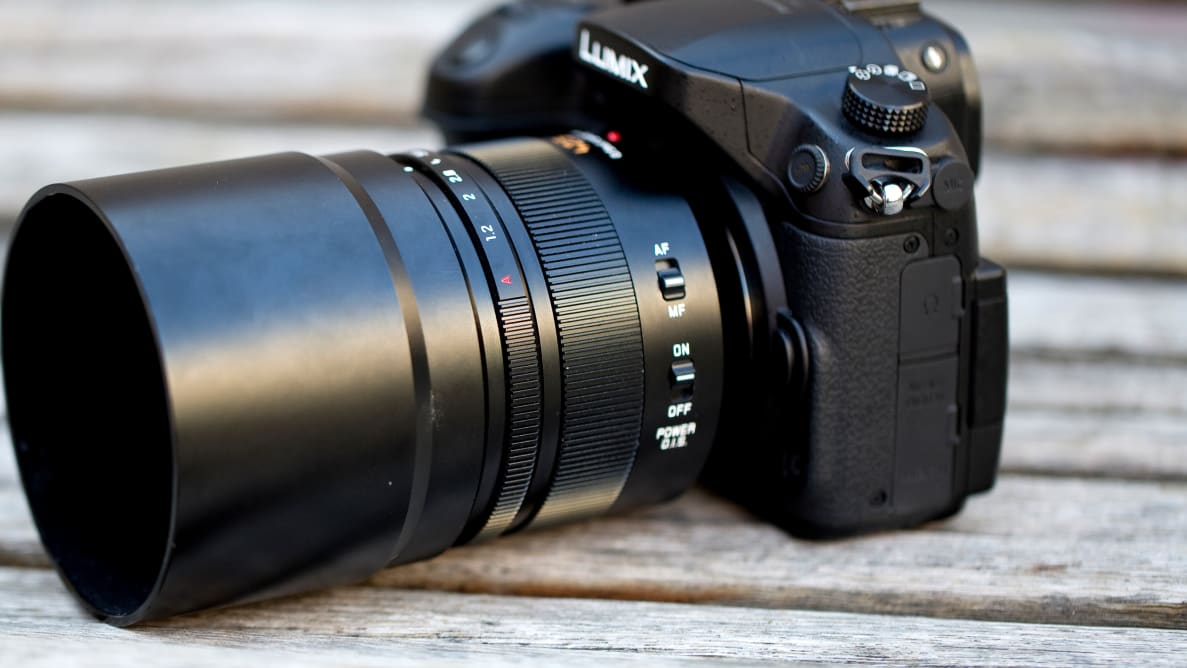But great cameras are nothing without great lenses to back them up. Micro Four Thirds is known for quality, compact optics, but the early wave of lenses definitely left room for improvement on the top end. With the Panasonic-developed, Leica-approved DG Nocticron 42.5mm f/1.2 (MSRP $1,599.99), that improvement has arrived in a big way. A supremely well-built lens with excellent sharpness and killer bokeh, it can rival the best portrait glass from leading full-frame systems.
Yes, it’s very expensive, but if you want the best portrait lens that Micro Four Thirds has to offer—heck, the best lens period—this is it.
Who's It For?
For Micro Four Thirds shooters, the Pana-Leica Nocticron 42.5mm f/1.2 is the premier choice for portrait photographers, and a great choice for street photographers as well. Its f/1.2 maximum aperture is the widest you can get in an autofocus M43 lens, making it ideal for low-light shooting and shallow depth of field applications.
In particular, that light-gathering ability is a real help on Micro Four Thirds cameras, where high-ISO image quality (though much better than it was a few years ago) still lags behind many APS-C and full-frame cameras.
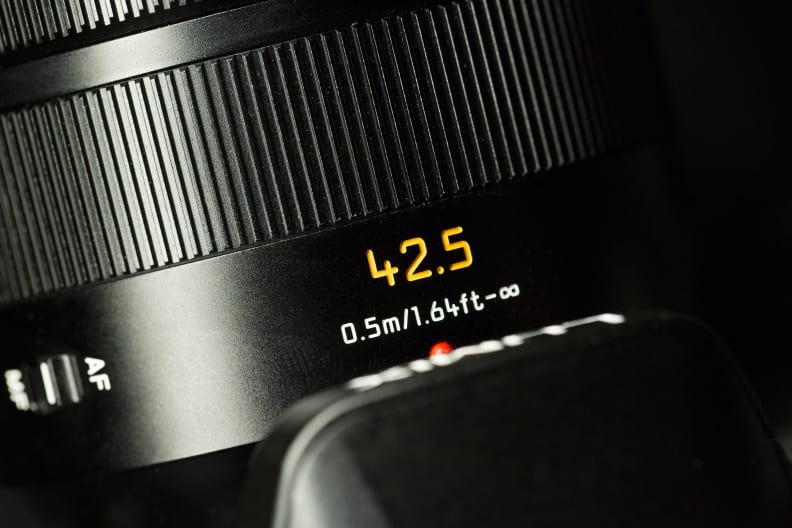
On Micro Four Thirds cameras, this 42.5mm lens behaves like an 85mm lens would on a full-frame camera.
The main limiting factor here is, of course, price. At $1,600, the Nocticron is going to be an aspirational purchase for all except professional photographers and the most well-heeled enthusiasts. And the premium is especially glaring given the existence of far more affordable, high-performing alternatives like the Olympus 45mm f/1.8 ($400) and Pana-Leica 45mm f/2.8 Macro ($900).
Look and Feel
As soon as you pick up the Nocticron 42.5mm f/1.2, it becomes clear that you’re dealing with a whole new class of Micro Four Thirds lens. It's built to be (almost) on par with your typical Leica lens, with a tight, all-metal design that includes a generously sized focus ring and a dedicated aperture ring. Both rings offer reassuring action; the focus ring is exquisitely smooth, and the aperture ring clicks confidently into place.
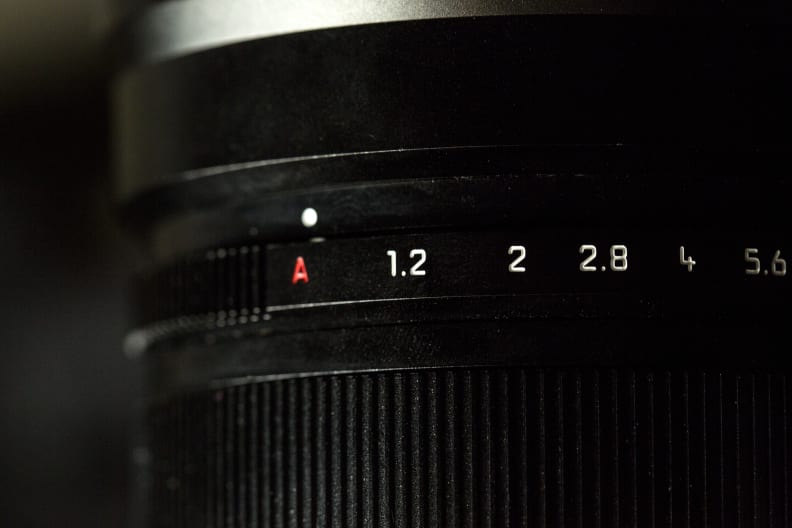
The manual aperture ring feels great, but it's not mechanically linked; it simply tells the camera what to do in M and Av modes.
That control combo makes the Nocticron an excellent choice for hardcore enthusiasts who prefer an old-school, hands-on approach to photography. However, it's worth noting that the aperture ring presents a bit of a fragmentation problem, since it's only supported by Panasonic cameras; if you're shooting with the Nocticron on an OM-D, it's totally useless.
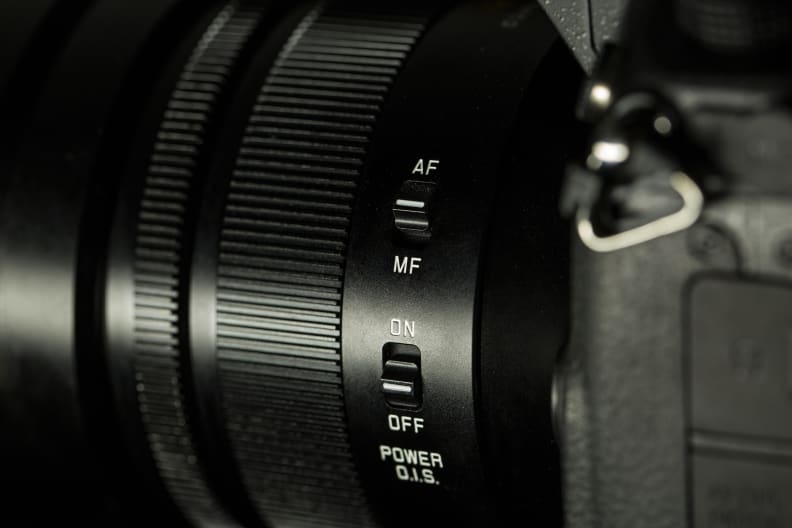
The Nocticron has manual switches to control both focusing mode and optical image stabilization.
The aperture ring isn't mechanically coupled to the actual iris, either, so it’s really just a fancy way of telling the camera which setting to use in the manual and aperture priority modes. When you’re in program or full auto the camera will usually ignore whatever the lens is set to and follow its own programming.
From a handling perspective, the only downside is that the Nocticron is quite large compared to most Micro Four Thirds primes, an issue exacerbated by the almost comically large lens hood. The hood helps reduce flare, but it also makes the lens considerably less discreet.
{{ photo_gallery "tour" }}
Image Quality
When the Nocticron arrived in our labs for testing, we were already very well-versed in its capabilities. Having shot with it several times over the past 18 months, we knew to expect sharp results, virtually nonexistent aberrations, and well-corrected distortion.

EXIF: 42.5mm, ISO 200, 1/1000, f/1.2
What we didn't expect was a lens that would destroy the rest of the Micro Four Thirds pack. In the lab, mounted on a GH4, the Nocticron achieved peak sharpness figures well above what we've seen from other lenses in the system. (The Olympus 75mm f/1.8 is the only rival that even comes close.) It's already very sharp in the center at f/1.2, and the resolution figures become truly exemplary from f/2.8 through f/5.6.

EXIF: 42.5mm, ISO 800, 1/160, f/1.2
Creatively, we've simply fallen in love with this lens. It produces some of the best bokeh around, and certainly some of the most beautiful shots that we've ever gotten from a Micro Four Thirds lens. The innovative lens design even reduces the nasty "onion ring" effect that tends to plague other lenses with aspherical elements, rendering out-of-focus points of light exceptionally well.

EXIF: 42.5mm, ISO 200, 1/125, f/1.2
All in all, this is easily our favorite Micro Four Thirds lens. If you're committed to the system and shoot lots of portraits, this is hands-down the lens that you should get, provided it's within your means.
Below you can see sample photos taken with the Panasonic Leica DG Nocticron 42.5mm f/1.2 mounted on a Panasonic GH4 and Olympus OM-D E-M1. Click the link below each photo to download the full-resolution image.
{{ photo_gallery name="sample" }}
Conclusion
If you own a high-end Micro Four Thirds camera, you're probably the kind of photographer that the Nocticron 42.5mm f/1.2 was created for. You know, an enthusiast who's not above spending some serious coin to get the most out of your gear. This is a lens that can most definitely achieve that objective.
In the words of Ferris Bueller, "It is so choice." It’s endless fun to shoot with, and the results are almost effortlessly sharp, contrasty, and beautifully rendered. Perhaps most importantly, the bokeh is wonderful, smooth, and consistent from f/1.2 onward.
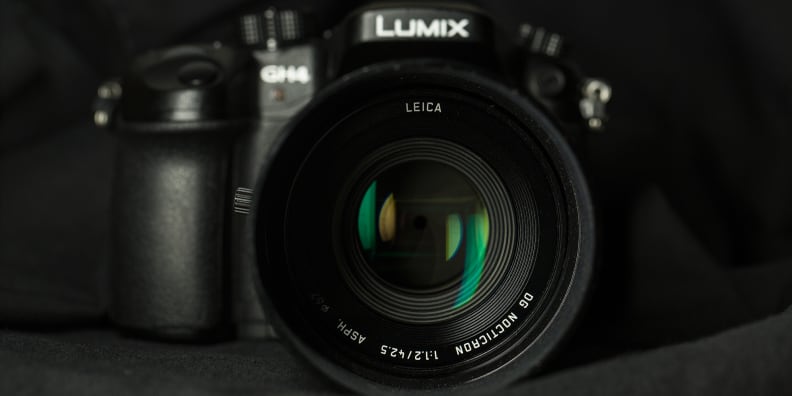
The Panasonic Lumix G Leica DG Nocticron 42.5mm f/1.2 is a fairly big lens, but isn't overwhelming.
A word of caution, though: don’t fall in love unless you can part with some serious cash. This is, without question, my favorite Micro Four Thirds lens and it may quickly become yours, too. That’s a dangerous game to play, especially if you're not good at resisting four-figure impulse purchases. It goes on sale often, but even at $1,300 or $1,400 it’s a tall order.
Panasonic has clearly heard those concerns, and a new Nocticron is on the way, packing the same 42.5mm focal length but a more pedestrian f/1.7 aperture. It may not achieve quite the same staggering results as the f/1.2 version, but it’s set to arrive at a far more reasonable $400 MSRP.
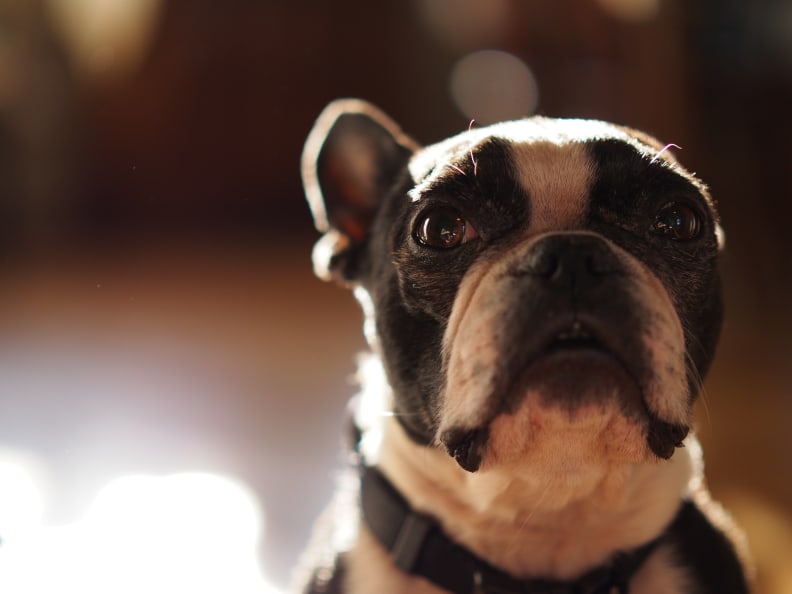
EXIF: 42.5mm, ISO 200, 1/400, f/1.2
But let's be real: The Nocticron 42.5mm f/1.2 is a halo product, a flare that Panasonic and its partner Leica have sent up to show the world what they can do. It's something to scribble on the “someday” list, or pick up if you get an unexpected windfall. And while it's incredibly good, we can't say that it quite justifies its astronomical price tag—especially given the bargains to be found elsewhere in the Micro Four Thirds family.
But whether you're seriously considering picking one up, or simply drooling over the possibility, this is a lens to keep your eye on. It won't wind up in everyone's bag, but it sets a new standard against which all Micro Four Thirds lenses should be compared. When evaluating any lens, we focus on four key areas: sharpness, distortion, chromatic aberration, and bokeh. A perfect lens would render the finest details accurately, wouldn’t distort straight lines or produce ugly fringing around high-contrast subjects, and would create smooth out-of-focus areas.
The Panasonic Leica DG Nocticron 42.5mm f/1.2 blew us away with its performance, both in and out of our testing labs. We're talking about spectacular bokeh and impressively high resolution, with little distortion and chromatic aberration to get in the way. The lens even performs admirably at f/1.2, though if you're after peak sharpness we recommend stopping down to f/2.8 through f/5.6.
Make no mistake, this is an absurdly expensive lens—probably too much lens for most shooters. But if you want the best that Micro Four Thirds has to offer, this is it.
Sharpness
A lens's sharpness is its ability to render the finest details in photographs. In testing a lens, we consider sharpness across the entire frame, from the center of your images out to the extreme corners, using an average that gives extra weight to center performance. We quantify sharpness using line widths per picture height (LW/PH) at a contrast of MTF50.
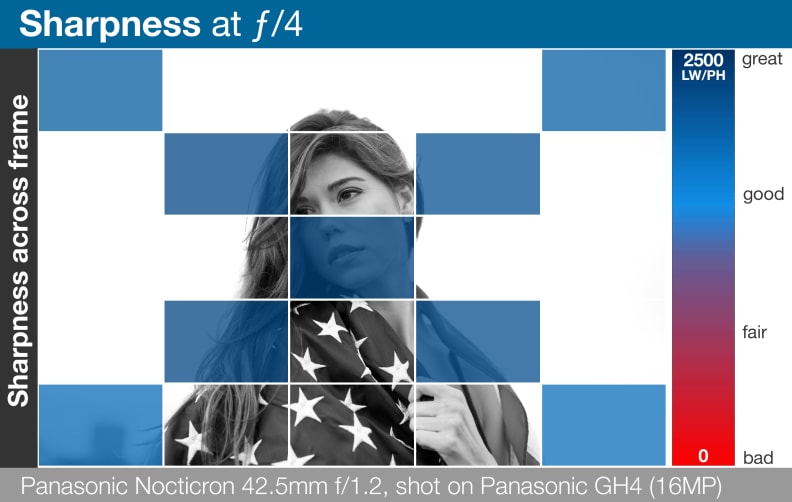
Stopped down to f/4, the Nocticron is an unbelievably fantastic piece of glass.
Micro Four Thirds lenses are generally well-regarded for a smart compromise between performance and size, rather than a pure focus on resolving power. The Nocticron, however, forges its own path, resolving as well as many top-tier full-frame portrait lenses.
At f/1.2 we see an average result of about 1,550 lines across the frame, buoyed by an excellent center performance of about 1,900 lines. That's not as sharp as some similar full-frame primes, though admittedly we haven't yet tested its only true equivalent, the Canon EF 85mm f/1.2L. Still, it's more than sharp enough for portraiture, where having pin-sharp images isn't always the goal.
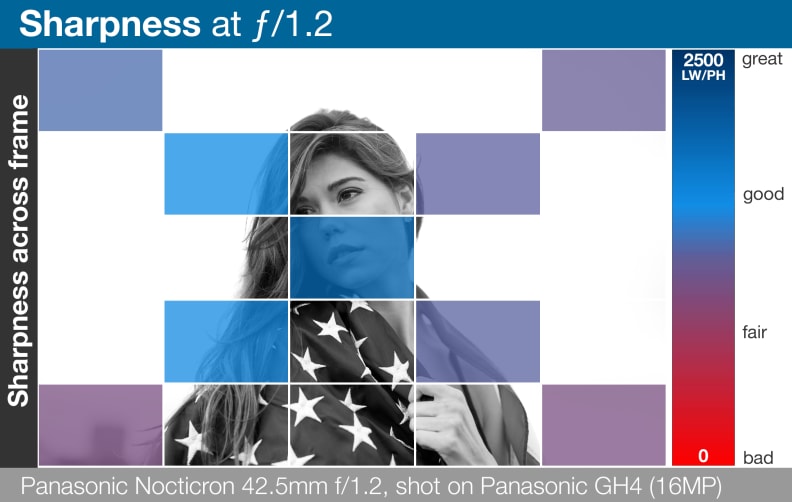
At full wide, center sharpness is great, while the corners suffer a little bit.
While the center steadily improves as you move close down the aperture, it's the drastic improvement in the corner and midway (50% from center) regions that's most notable.
By f/2.8 the average performance is already over 2,000 lines at MTF50, which is remarkable for Micro Four Thirds. The center peaks at around 2,300 lines from f/2.8 to f/4, with the corners hitting 2,200 lines by f/5.6. This is the sweet spot; from f/8 onward diffraction sets in, limiting peak resolution across the frame.
Distortion
We penalize lenses for distortion when they bend or warp your images image, causing normally straight lines to curve.
There are two types of distortion: When the center of the frame seems to bulge outward toward you, that’s barrel distortion. It's typically a result of the challenges inherent in designing wide-angle lenses. When the center of the image looks like it's being sucked in, that’s pincushion distortion. Pincushion is more common in telephoto lenses.
Like most telephoto lenses, the Nocticron would likely have some form of pincushion distortion if it weren't for its aspherical elements. But with them in place, it manages to keep distortion under 0.25% in most of our test shots. The corners are perhaps a little over-corrected, resulting in more complex mustache distortion, but it's negligible at its worst.
Chromatic Aberration
Chromatic aberration refers to the various types of “fringing” that can appear around high contrast subjects in photos—like leaves set against a bright sky. The fringing is usually either green, blue, or magenta and while it’s relatively easy to remove the offensive color with software, it can also degrade image sharpness.
CA is never a huge deal for the Nocticron, but it does pop up in most high-contrast scenes. This is especially true of subjects that cross the focal plane, with visible color fringing at the edges of the in-focus area. The effect is usually exacerbated by particularly wide apertures, so it's no surprise to see it in a f/1.2 lens. But even at its worst, the color fringing is easy enough to correct in the photo editor of your choice, and not severe enough that it should significantly impact sharpness.
Bokeh
Bokeh refers to the quality of the out of focus areas in a photo. It's important for a lens to render your subject with sharp details, but it's just as important that the background not distract from the focus of your shot.
While some lenses have bokeh that's prized for its unique characteristics, most lenses aim to produce extremely smooth backgrounds. In particular, photographers prize lenses that can produce circular bokeh that’s free of aspherical distortion (or “coma”).
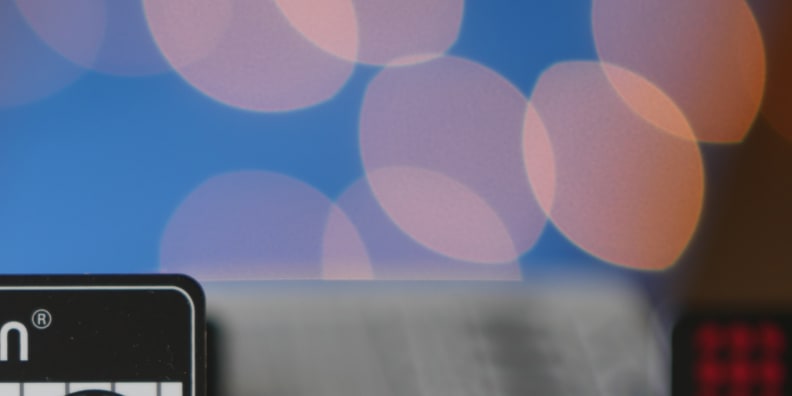
Like most lenses, the Nocticron struggles to produce perfectly round bokeh near the edges of the frame when shooting wide open, but that's just about the only notable fault we could find. Especially at f/1.2, the bokeh is creamy-smooth, with a graceful transition away from the point of focus.

EXIF: 42.5mm, ISO 200, 1/400, f/1.2
This lens goes above and beyond, however, as Panasonic has developed a new way to produce aspherical lenses without their nasty trademark "onion ring" bokeh effect. It's an issue that's usually most visible when you have points of light in the background, as in the first image above.

EXIF: 42.5mm, ISO 800, 1/160, f/1.2
In typical onion ringing, you'll see a heavily textured interior; in shots from the Nocticron, this effect is almost entirely eliminated. It's a fantastic result, making this one of the best portrait lenses you can get for any camera. And as you can see in the two samples above, it results in wonderful portraits, especially of pets!
Meet the tester
TJ is the former Director of Content Development at Reviewed. He is a Massachusetts native and has covered electronics, cameras, TVs, smartphones, parenting, and more for Reviewed. He is from the self-styled "Cranberry Capitol of the World," which is, in fact, a real thing.
Checking our work.
Our team is here for one purpose: to help you buy the best stuff and love what you own. Our writers, editors, and lab technicians obsess over the products we cover to make sure you're confident and satisfied. Have a different opinion about something we recommend? Email us and we'll compare notes.
Shoot us an email

